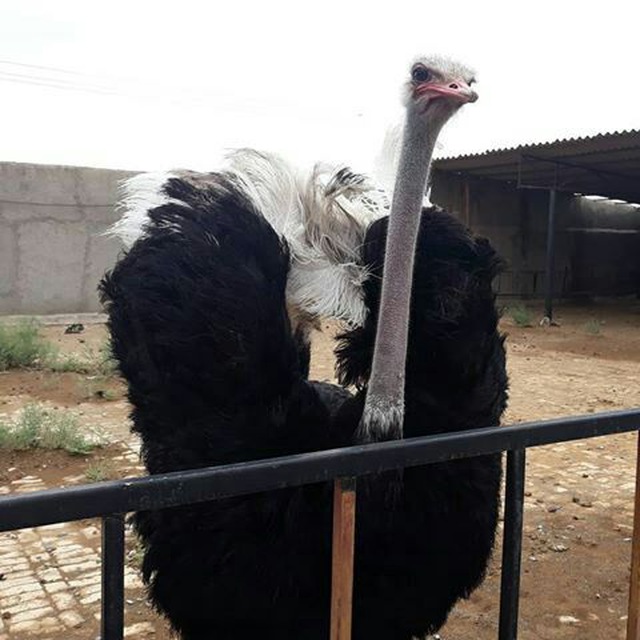Therefore, you should not expose the watering cans to direct sunlight.
Feeding ostrich chicks with fodder
Feeding ostrich chicks with fodder: As soon as the ostrich chicks get used to eating, they become interested in eating fresh fodder. Because fresh fodder stimulates the appetite. So, in addition to floury foods, three or four times a day we should add chopped fodder such as nettle, clover, alfalfa and cabbage.
We should pay attention to this point that in the first days we should only use fodder leaves and not use their stems due to the risk of accumulation. We can hang fresh alfalfa or clover bushes at about the height of the chickens’ heads. When the leaves are eaten by the chickens, we can collect the leafless stems.
Fodder that is left and withered causes digestive problems. So we have to provide some fodder for the chickens to be eaten within two hours.
If we don’t have access to green fodder, we can use clover and dry alfalfa instead, we must cut fresh or even dry fodder into small pieces.
The pieces of fodder should always be smaller than the length of the bird’s little finger. As the age of the chickens increases, the amount of fodder increases.
Excursion and grazing for ostrich chicks
Why is alfalfa or clover useful for breeding ostriches in a field, and why in a field alfalfa or clover will be a reliable alternative to fodder from the age of two to three weeks. You should pay attention to the following points to avoid excessive consumption of stems and indigestible objects as a result of the risk of constipation:
Before entering the farm, the chickens must have been fed with high-energy food and should not enter the farm hungry.
The eating behavior of chickens should be carefully controlled when starting grazing.
Primary grazing should not exceed half an hour twice a day. We can increase the time when the chickens get used to grazing.
If the height of pasture forage is high, especially hay, it may be difficult for chickens to pluck leaves from long stalks and they will lose their forage and prefer other things such as weeds, sand and gravel. The fields intended for grazing the chickens should be harvested regularly and the fodder height should not exceed the back of the chickens until the age of 6 weeks.
Feeding ostrich chicks
In addition to these points, we should pay attention that until the age of three to four months, the fodder should not be wet when the chicks are transferred to the pasture.
In South Africa, ostrich breeders found that if the surface of the bird’s stomach gets wet from contact with the forage, the leaves being wet from dew or rain, this will cause them to die.
Therefore, the daily movement and grazing of ostrich chicks during the rainy season should be postponed until the grass is completely dry.
We repeat again that breeding ostriches is sensitive like all animals and requires a lot of care, especially raising and keeping ostrich chicks, so be careful and monitor all the steps every day. Ostrich chicks
